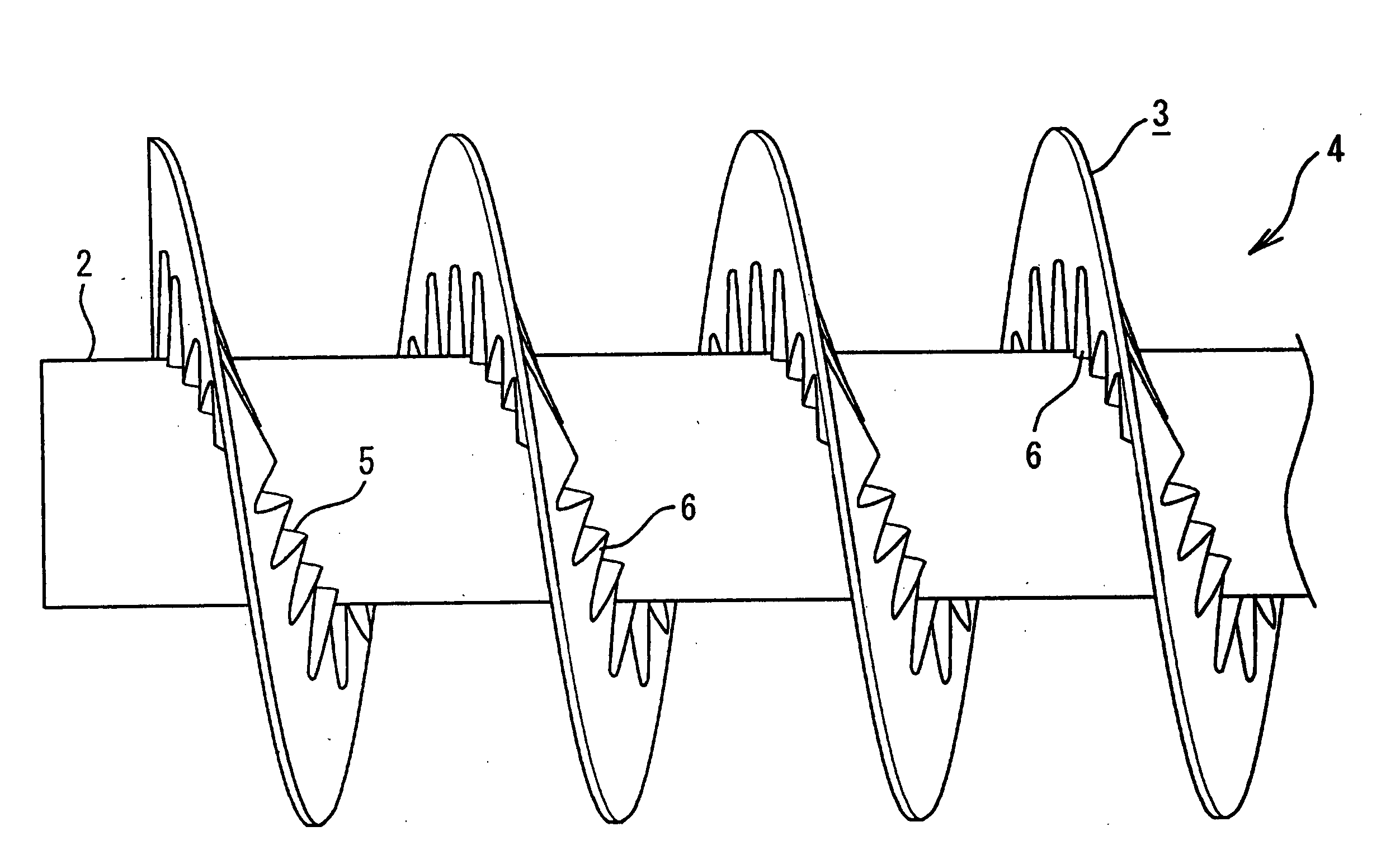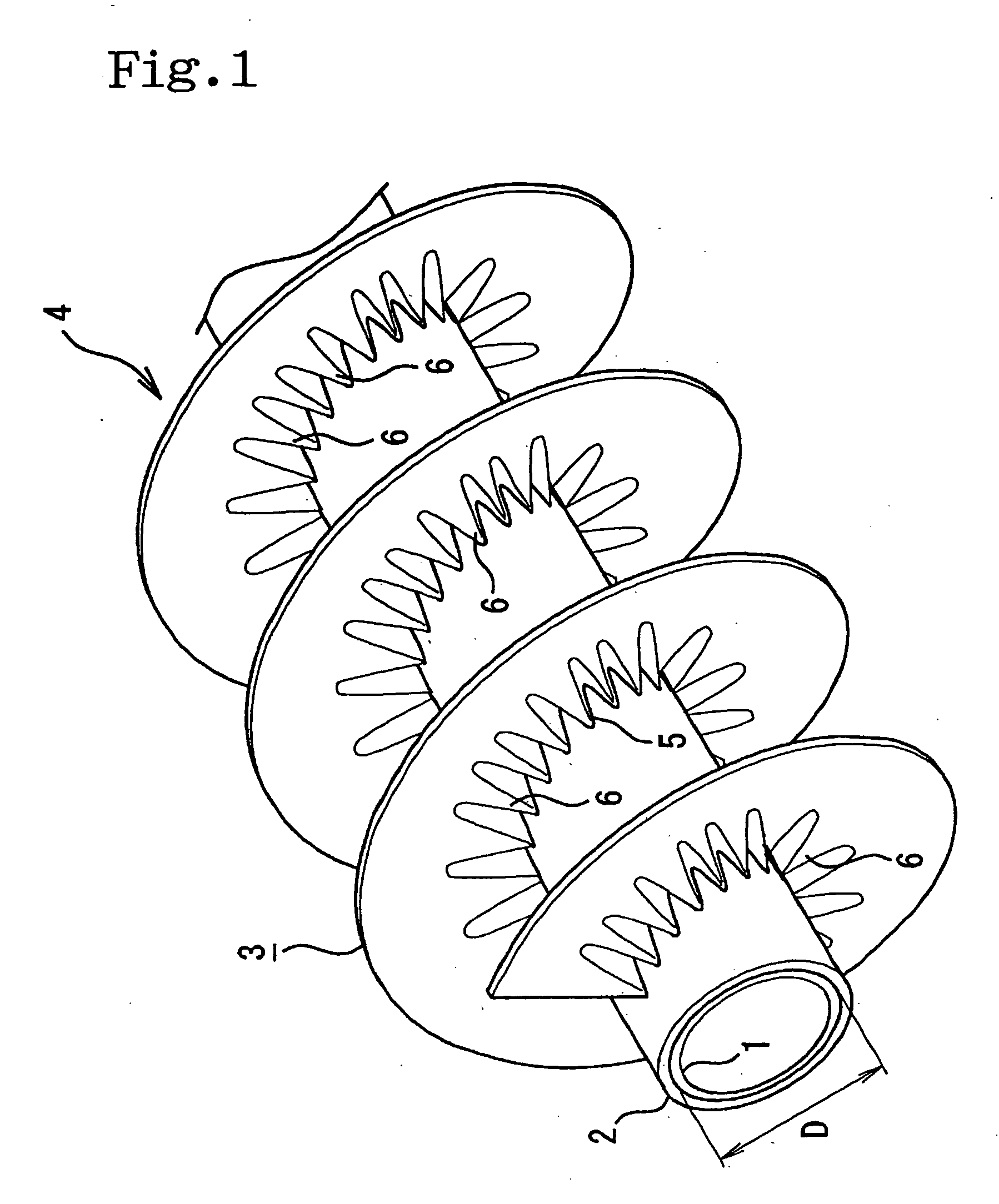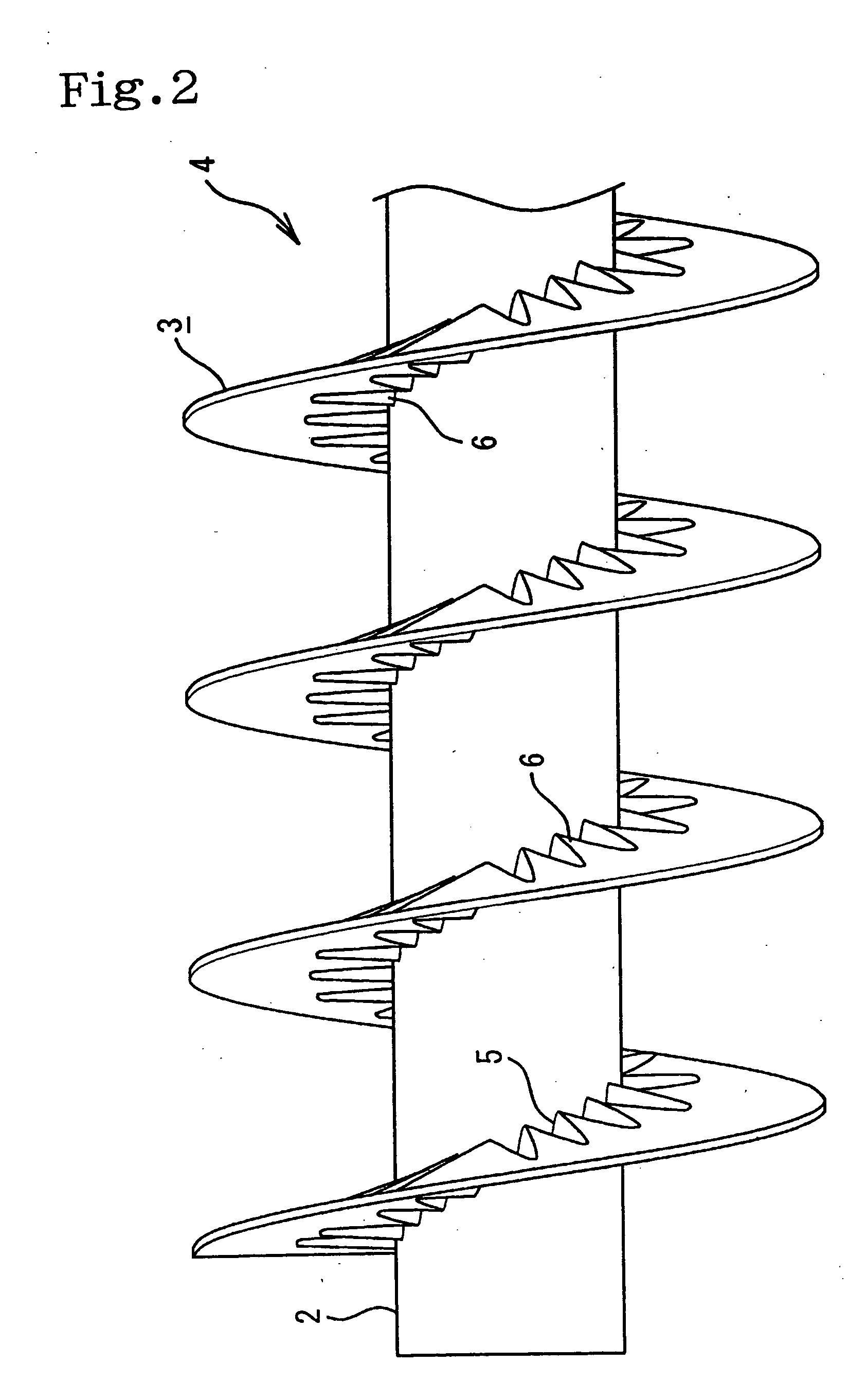Heat conduction pipe externally covered with fin member
a technology of heat exchange pipe and fin member, which is applied in the direction of pipe heating/cooling, mechanical equipment, lighting and heating apparatus, etc., can solve the problems of easy damage of the anti-corrosion coating layer on the surface of the metal pipe, corrosion residence, and difficulty in improving heat exchange efficiency among fluids mutually flowing, so as to improve the thermal conductivity through the resin coating layer between the metal pipe and the fin member, the effect of increasing the heat exchange area and increasing the heat radiation property
- Summary
- Abstract
- Description
- Claims
- Application Information
AI Technical Summary
Benefits of technology
Problems solved by technology
Method used
Image
Examples
first embodiment
[0055] The first embodiment shown in FIG. 1 to FIG. 4 is described in detail. Numeral 1 is a metal pipe using, e.g., a single-wound pipe having an outer surface not covered with copper, a double-wound pipe having the outer surface covered with the copper, an aluminum pipe, or the like, wherein an outer diameter is defined as 8 mm and thickness is defined as 0.7 mm. The metal pipe 1 can obtain corrosive resistance by being covered with a resin coating layer 2 as described hereinafter, so the metal pipe can be directly used. In this embodiment, however, sacrificially corrosive anticorrosion plating (not shown in Figures) is further formed on the outer surface of the metal pipe, so the great corrosion resistance can be obtained under harsh corrosive environment.
[0056] The anticorrosion plating is formed of one layer by coating, e.g., zinc, tin, alloy of tin and zinc, nickel, alloy of zinc and nickel, alloy of zinc and aluminum, or may be structured of a plurality of the layers, e.g., ...
second embodiment
[0073] In the above described first embodiment, immediately before the fin member 3 holding wave form edges over the whole width is formed on the metal pipe, in order to make spiral winding of the fin member on the outer circumference of the metal pipe 1 easy, the inner circumferential side is radially reduced to enlarge the undulation of the wave form edges 6 while the wave form edges 6 are expanded flatly at the outer circumferential side, so the fin member 3 is curved in an arc shape. In the second embodiment, on the other hand, as shown in FIG. 6, in a state where the fin member 3 holding a plurality of the wave form edges 6 over the whole wide is spirally wound on the metal pipe 1, the undulation of the wave form edges 6 is enlarged by shrinking the inner circumferential side while at the outer circumferential side, as shown in FIG. 6, the wave form edges 6 stay as just opened without being expanded flatly, so the wave form edges is formed at the outer circumferential side in a...
third embodiment
[0078] In the embodiment 3 shown in the FIG. 7, cathodic electrodeposition coating is arranged on the whole external surface of the heat conduction pipe. The process of manufacturing the heat conduction pipe 4 is first subject to zinc based plating on the outer circumference of the metal pipe 1 made of iron to enhance the corrosion resistance, and after arranging an epoxy resin on the outer circumference as a primer, a PA is extruded on the outer circumference of the epoxy resin to form the resin coating layer 2. The heat conduction pipe 4 is-formed by spirally arranging the metal fin member 3 with zinc based plating to enhance the corrosion resistance on the outer circumference of the metal pipe 1 having the resin coating layer 2. The spiral arrangement of the fin member 3 may be arranged by tensioning the outer circumference side as shown in the First embodiment in the FIG. 5 when the fine member 3 formed with the wave form edges 6 across whole width as shown in the FIG. 4 to the ...
PUM
| Property | Measurement | Unit |
|---|---|---|
| thickness | aaaaa | aaaaa |
| thickness | aaaaa | aaaaa |
| thickness | aaaaa | aaaaa |
Abstract
Description
Claims
Application Information
 Login to View More
Login to View More - R&D
- Intellectual Property
- Life Sciences
- Materials
- Tech Scout
- Unparalleled Data Quality
- Higher Quality Content
- 60% Fewer Hallucinations
Browse by: Latest US Patents, China's latest patents, Technical Efficacy Thesaurus, Application Domain, Technology Topic, Popular Technical Reports.
© 2025 PatSnap. All rights reserved.Legal|Privacy policy|Modern Slavery Act Transparency Statement|Sitemap|About US| Contact US: help@patsnap.com



